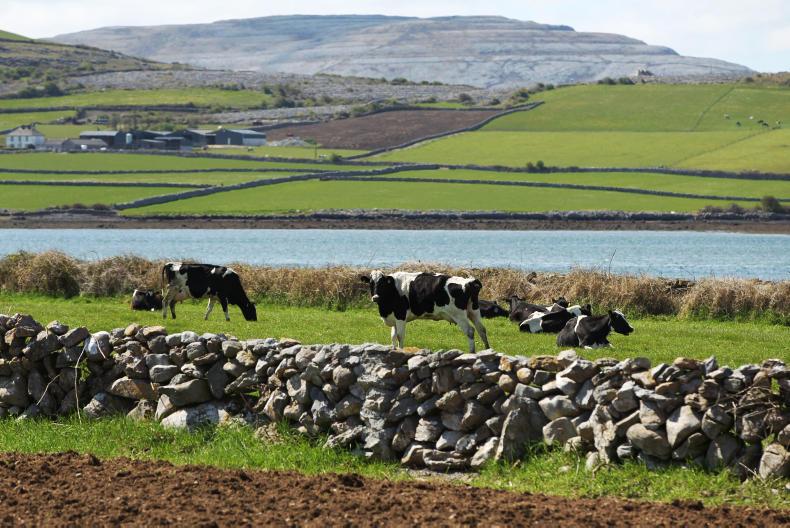Preliminary results from the national farm survey for 2016 show that average farm income was €24,060, down 9% on 2015. This is the lowest figure in six years.
Average farm incomes fell 9% to €24,060 - according to the @teagasc National Farm Survey 2016 pic.twitter.com/v5F29gZrhz
— Farmers Journal (@farmersjournal) May 31, 2017
The milk price crash affecting peak production months last year meant dairy farmers suffered the heaviest loss, with incomes down 17%. More than €10,000 was wiped off the income of the average Irish dairy farm last year.
“Increases in milk volume and production efficiency further reduced production costs in 2016, but lower milk price meant dairy farmers were unable to maintain their incomes,” said Teagasc economist Trevor Donnellan.
A depressed milk price saw #Dairy incomes fall 17% in 2016 to an average of €51,809 pic.twitter.com/v9nDMSZu6h
— Farmers Journal (@farmersjournal) May 31, 2017
Tillage farmers saw profits decline by 10% to €30,816 on average, which Teagasc attributes to the combination of decreases in yields and prices.
Drystock steady
Despite low cattle prices in 2016, Teagasc says the rollout of GLAS and the BDGP led to a modest net income increase of 2% to 4% for suckler and beef farmers. This leaves the average cattle farm income at €12,908. “Cattle farmers are still very reliant on direct payments, which comprise a large proportion of their income,” said Brian Moran of the Teagasc national farm survey.
Sheep farming returned a stable income, averaging €16,011 last year, as increased payments compensated for lower lamb prices.
The average direct payment per farm was nearly €18,000 in 2016. This contributes to 75% of farm income on average and almost 100% for drystock farmers.
Investment and debt
On-farm investment fell by nearly €100m to €690m last year. The largest capital investors were dairy farmers, with a €245m spend – but again this showed a massive slowdown compared with the €300m they invested in 2015.
Although they put the brakes on investment, farmers saw their debt levels rise last year. Those with business borrowings (one in three) owed €63,764 or €2,000 more than in 2015. With incomes falling, the burden of their debt rose from 1.5 times annual income in 2015 to 1.8 times last year.
Outlook
Teagasc’s outlook for this year as far as dairying is concerned is “very positive, with a dramatic recovery in incomes forecast”. Income from drystock farming is expected to remain stable.
The survey also provided demographic data, putting the average Irish farmers' age at 56.
The average farmer is aged 56, lowest age is on dairy farms at 51 and highest age is on sheep farmers at 59- @teagasc National Farm Survey pic.twitter.com/xPckTnhHBv
— Farmers Journal (@farmersjournal) May 31, 2017
Teagasc outlook: Dairy farmers have most to look forward to in 2017







 This is a subscriber-only article
This is a subscriber-only article










SHARING OPTIONS: